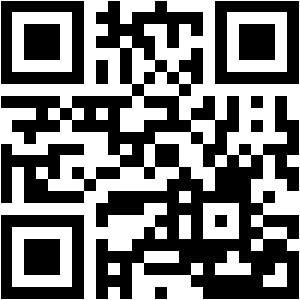| University | New Zealand Tertiary College (NZTC) |
| Subject | MR510 The Arts in Early Childhood Education |
Briefing Guidelines
MR510 The Arts in Early Childhood Education Assessment 2 and 3
Assessment Two: Three-Part Report
Part One: Personal Art-Making (dance, drama, music-sound arts or visual arts)
Examine your personal art-making experiences during the course so far. Discuss the processes of your artmaking experiences and provide insights on:
• What you have learned about the process of art-making and your beliefs about art-making.
• The influence of sociocultural factors and consideration of your cultural identity in your art-making.
Use at least two examples from your own original art-making experience to support your discussion. Note: For dance—identify the choreography; for drama—identify the plot and characters; for music/sound—identify the instruments and/or provide the lyrics; and for visual arts—identify the medium used (for example, watercolour painting).
500 words
Part Two: Analysis and next steps for children’s art making
Choose one of the provided scenarios of the art making of young children (click on the download button to access the scenarios). Imagine you are the observing teacher:
Click on the Download button to access the Assessment Scenario
• Analyse the learning children are engaging in
• Discuss the process of children’s/child’s art-making
• Consider your beliefs about children’s art-making
• Provide an idea for an extension for children’s learning based on the scenario and your analysis of the
learning.
• Reflect on the benefits for children’s holistic development through their art-making.
Stuck! Do not Know Assessment Answers?
Hire NZ Native Experts 24/7.
800 words
Part Three: Understanding Art Education in Early Childhood
Critically analyse how your understandings and perceptions from section one and section two influence your
thinking:
a. about how young children are learners of the arts
b. what this might mean for a teacher of the arts in early childhood education
700 words
Each part of your report must be supported by course literature, and additional research into scholarly
Literature is also required.
Total word count: 2000 words
35%
This assessment is written in report form. Therefore, the assessment should be presented in the following order:
Title page.
Contents page
Introduction.
Discussion, addressing the three sections. Remember, your discussion needs to be structured, and you can use headings and subheadings.
Conclusion.
References
Appendices.
You do need to write a brief introduction and conclusion for your report. There is no fixed word count for either; just remember that those two parts of your report are brief and only offer a short preview/summary and are included in the word count. Appendices are not included in the word count.
Section 1:
Choose one art form you are going to discuss and relate it to your experiences with this art form. You can make brief mention of your own art education and discuss what you liked or did not like about it. As this is an academic assessment, ensure you are supporting the discussion with literature. Then, deliberate on your art-making journey during this course so far. Was it easy to create artwork? What did you find helpful or inspiring?
Address the process of art making and your beliefs about art making, for example, the value of art making. Also consider the socio-cultural factors that might have shaped your beliefs and your art engagement and how your cultural identity might have guided your art making. Alternatively, you could also discuss how you explore new or different cultures through your art making.
Use at least two examples from your original art-making experience to elaborate on your points. Note: For dance—identify the choreography; for drama—identify the plot and characters; for music -sound—identify the instruments and/or provide the lyrics and for visual artsidentify the medium used (for
example, watercolour painting).
Section 2:
Discuss and analyse the art-making of the child/children in your chosen scenario and the art-making process the child engages in. Informed by literature, share your beliefs about children’s art-making. Lastly, focus on children expressing themselves and their world through the arts and the art making in light of their development
Section 3:
Using the information detailed in sections one and two, analyse how young children are learners of the arts. Think about the observations you took of a child making art, of your personal experiences and thoughts, and of what the literature says about art making. Then think about how you see the child as a
learner of arts. How do they, why do they, when do they, and for what purpose do they engage in artmaking? Remember, the temporal and physical environment are part of this discussion, too.
Then, consider what this might mean for a teacher of the arts in early childhood education. From your observation and your personal experiences and literature, what strategies work, what resources could be used, and what do or don’t you do when engaging in the arts with children? Remember to make use of headings and subheadings so you can plan the structure of your essay.
Buy Custom Assignment & Homework Solutions
Pay to NZ Native Writers | Cheap Cost & Plag Free
Assessment Three: PowerPoint and Personal position statement
This assessment has two sections:
Section One: PowerPoint
The purpose of the PowerPoint is to represent your recent personal art-making journey in a visual mode, and it will contain original images of your art-making along with explanatory points about that personal process and journey. These original images could be photographs of your music or
sound making, dancing, drama, or original visual arts. Please limit the use of explanatory text about the process and journey of your art making within the PowerPoint slides to 30 words per slide. In-text references are required.
(6 slides)
Section Two: Personal position statement on arts education
Articulate your personal position regarding the purpose of arts education for infants, toddlers, and young children. Your beliefs and values about the learning and teaching of the arts (dance, drama, music-sound arts, or visual arts), and how this may be revealed in practice, will be evident in this statement. Clear links between the beliefs and understandings of your position statement and the process of your art-making journey in the PowerPoint are to be established. This will be an authentic, professional statement informed by relevant early childhood arts education literature from this course and additional research into scholarly literature pertaining to the arts discipline
(dance, drama, music-sound arts, or visual arts) that you focused on in your arts journey in this course.
Comprehension of the vision of Te Whāriki (MoE, 2017) will be evident in the statement.
Add a combined reference list for both your statement and PowerPoint here in Part Two.
Contributes to Learning Outcomes 1, 2, 3
(2500 words)
(45%)
Powerpoint presentation
The PowerPoint presentation will contain one image (or if you have chosen drama, then a plot summary) from assessment 2 to show the continuity from weeks 1-7 to weeks 8-12. Building on and developing ideas from your assessment 2 means taking the ideas a step further. This would be on one of the six slides.
Include a source of inspiration by locating a credible source of information such as an encyclopaedia, a well-known establishment, or a government website. For example, this could be Shakespeare for a playwright for drama, the Shen Yu dance group, Van Gogh for visual arts, or Mozart for music.
A well-known encyclopaedia is https://www.britannica.com.
An example of a government website is https://www.india.gov.in/india-glance/culture-heritage
Use at least three new images as evidence of your personal art making within the six slides. One of the images on one of the six slides can be from the prior assessment.
For an image previously submitted, you would write a caption underneath clarifying that this is the image representing the earlier part of your personal journey
The PowerPoint will showcase aspects of the 12-week arts journey, and for photography this will hold one photo per slide or perhaps sketches showing your composition/layout ideas. For dance, the slides would show choreography sketches or photos of dance postures.
Personal position statement
The personal position statement will build upon your developing philosophy about arts education. Your reading will be wider than what the course guide offers, and you will have done additional research to source relevant arts education literature
Points to consider when writing the statement
Keep the word count in mind when planning paragraphs for the statement.
Keep personal beliefs, personal values, and cultural elements to 5% of the word count.
Ensure you are very clear on the vision of Te Whāriki (MoE, 2017) and that your statement reflects this vision.
Use course readings in addition to extra scholarly journal articles about arts education that you have searched for from databases such as Ebsco. If you are discussing an art form, then use the vocabulary that relates to the art form.
Use minimal ‘I’ statements, although some are needed to bring your voice into the statement.
The assessment is written in the third person, unless you are referring to personal values, beliefs, and experiences. Colin Gibbs’ (2005) reading may be a good guide in terms of using ‘I’ statements alongside scholarly references.
In quest for a professional assignment help?
Flexible rates compatible with everyone’s budget
Struggling with your MR510 Arts in Early Childhood Education assessments? NZ Assignment Help provides childcare assignment help to support your report, PowerPoint, and personal position statement. Our experts guide you in analysing personal art-making experiences, children’s art learning, and early childhood arts education theory, ensuring well-researched, APA 7th referenced, and high-quality submissions. Get professional help for online assignment help NZ and achieve top grades with confidence
- LAWS390 Business Law for Māori Organisations Essay | VUW New Zealand
- Nursing Assignment 3 : Factors that Impact Registered Nurses’ Ability to Influence National Government Health Policy
- The Management and Behaviour or Pregnant Sows on Pasture Assignment 1 | Massey University (MU)
- HAS 962 Occupational Hygiene: Measurement Assessment 4 AIOH Technical Report | UOW
- IT00143 Install & Optimize Software Applications Assignment | Pacific Polytech
- Digital Tourism and Hospitality Assignment Report | Auckland University of Technology
- HEAL840 Critical Enquiry for Evidence Based Practice Additional Assessment Opportunity (AAO) Semester 1 2025
- RES903 Research Dissertation Assessment One | Nelson Marlborough Institute of Technology (NMIT)
- 71338 Managing Change Assessment 3 Strategy and Implementation Report | Open Polytechnic
- BSRV4601 Fundamentals Real Estate Assignment 1: Eligibility and licensing | Open Polytechnic (OP)


